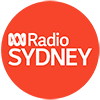Queensland Museum curators pick collection favourites to mark 155 years
Updated
 Photo:
Dr Christine Lambkin with the Queensland Museum's vast beetle collection. (ABC Radio Brisbane: Jessica Hinchliffe)
Photo:
Dr Christine Lambkin with the Queensland Museum's vast beetle collection. (ABC Radio Brisbane: Jessica Hinchliffe)
Australia's most visited museum has celebrated its 155th anniversary by digging through the 1.2 million objects that make up its vast collection worth more than $487 million.
The Queensland Museum curators were only too happy to select their favourite items, ranging from the heartfelt to the weird and wonderful.
For Dr Christine Lambkin, curator of entomology, her pick was the state's dung beetle collection.
"We have 87,000 dung beetle specimens in our collection and they really are beautiful.
"My favourite weird dung beetle is one that makes its balls from leaf litter; they're small but stunning."
 Photo:
Tens of thousands of dung beetles are part of the collection at the museum. (ABC Radio Brisbane: Jessica Hinchliffe)
Photo:
Tens of thousands of dung beetles are part of the collection at the museum. (ABC Radio Brisbane: Jessica Hinchliffe)
Another of Dr Lambkin's favourite items was the Falsifera, a handmade specimen that crosses a grasshopper and a cricket.
"It's a specimen made by a student at the University of Queensland, it's something we keep in the collection as it's a bit of fun," she said.
The Stone of Destiny
Chantal Knowles, head of the cultural and histories program, said her highlight was a very small piece of stone connected to one of Scotland's most famous relics.
The Stone of Scone, also known as the Stone of Destiny, is a red sandstone that was used for centuries in the coronation of Scottish kings, later removed to London by the English and installed in the chair used for the coronation of British monarchs.
 Photo:
A small stone in the collection could be a fragment of the Stone of Scone. (ABC Radio Brisbane: Jessica Hinchliffe)
Photo:
A small stone in the collection could be a fragment of the Stone of Scone. (ABC Radio Brisbane: Jessica Hinchliffe)
It 1954, the stone was stolen by students from Glasgow who broke into Westminster Abbey where the chair is kept.
During the robbery the stone broke in half.
 Photo:
Notes that accompany the stone shows it was sent from Glasgow. (ABC Radio Brisbane: Jessica Hinchliffe)
Photo:
Notes that accompany the stone shows it was sent from Glasgow. (ABC Radio Brisbane: Jessica Hinchliffe)
A piece of stone came to the museum with a note attached dated July 1955, showing that Robert Grey (a magistrate in Glasgow and a stonemason) sent a piece to a Queenslander.
"If there hadn't been a Scottish member of staff, I'm pretty sure it would have remained on the shelf," Ms Knowles said.
"It's a very small stone that measures two centimetres by one centimetre but is such an important object for Scottish people," she added.
A 1936 drawing with heart
Alethea Beetson, the museum's Indigenous engagement coordinator, selected a photograph of a drawing as a piece that resonated with her as it showed where her work and personal lives crossed paths.
 Photo:
Alethea Beetson holds the photo of the drawing of her grandmother from 1936. (ABC Radio Brisbane: Jessica Hinchliffe)
Photo:
Alethea Beetson holds the photo of the drawing of her grandmother from 1936. (ABC Radio Brisbane: Jessica Hinchliffe)
"It's a drawing done by Betty Zempel [Betty Mackenzie] in 1936; she was the daughter of the Aboriginal superintendent of the Cherbourg mission," she said.
"I stumbled across it looking for a photograph of my great-grandmother, and when I was flicking through I found a photo of this drawing and I looked at the back and discovered it was of my grandmother."
She said she was the first in her family to find the drawing.
"To have a personal experience of what my professional job is to do was really rewarding.
"Aboriginal and Torres Strait Islander people are directly connected to our collections."
Giant whale skulls from across the world
Heather Janetzki, manager of the mammal and bird research collections, said a rare beaked whale skull represented the museum's variety and that was why it was her pick.
"We have a skull of the Longman's beaked whale dating back to 1882 ... it is one of the rarest whales and least known about in the world," she said.
 Photo:
Heather Janetzki works with six metre whale skulls as part of the collection. (ABC Radio Brisbane: Jessica Hinchliffe)
Photo:
Heather Janetzki works with six metre whale skulls as part of the collection. (ABC Radio Brisbane: Jessica Hinchliffe)
The skull measures more than three metres in length.
Another unique and valued beaked whale skull in the collection came from New Caledonia after three whales beached themselves.
 Photo:
The large skull of a beaked whale from New Caledonia. (ABC Radio Brisbane: Jessica Hinchliffe)
Photo:
The large skull of a beaked whale from New Caledonia. (ABC Radio Brisbane: Jessica Hinchliffe)
"Since they didn't have a national history [museum] in New Caledonia, the Queensland Museums was sent the skulls," Ms Janetzki said.
"The skulls can be hard to store ... [we have] a sperm whale skull that measures about six metres long."
Topics: library-museum-and-gallery, animals, mammals---whales, art-history, indigenous-aboriginal-and-torres-strait-islander, brisbane-4000
First posted








